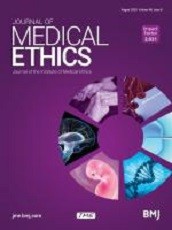Bernard M Dickens

Abstract
Alarm over the prospect that prenatal diagnostic techniques, which permit identification of fetal sex and facilitate abortion of healthy but unwanted female fetuses has led some to urge their outright prohibition. This article argues against that response. Prenatal diagnosis permits timely action to preserve and enhance the life and health of fetuses otherwise endangered, and, by offering assurance of fetal normality, may often encourage continuation of pregnancies otherwise vulnerable to termination. Further, conditions in some societies may sometimes render excusable the inclination to abort certain healthy female fetuses. In places where abortion for fetal sex alone is recognised as unethical, however, medical licensing authorities already possess the power to discipline, for professional misconduct, physicians who prescribe or perform prenatal diagnosis purely to identify fetal sex, or those who disclose fetal sex when that is unrelated to the fetus’s medical condition.
Dickens BM. Prenatal diagnosis and female abortion: a case study in medical law and ethics. J Med Ethics 1986 Sep; 12(3): 143-144.
